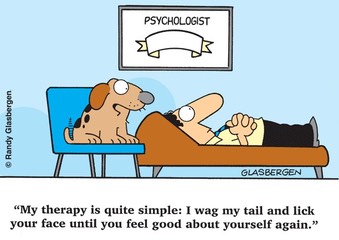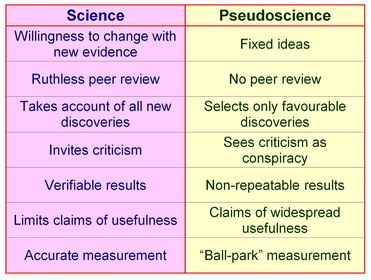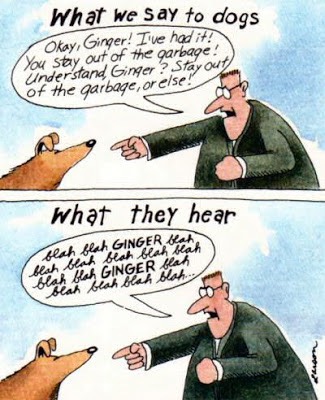
I had an interesting discussion with an individual a couple of weeks ago regarding dog training. We came at things from a very different perspective. This individual dismissed basic concepts of psychology and learning theory-classical conditioning, operant conditioning, counter conditioning and systematic desensitization as pseudo science, only really applicable for humans, not dogs. The individual stated he preferred understanding "dog cognition”. DIscussion is always good. It is informative to hear how others think, and to have your own views challenged. It was an interesting discussion, with some valuable information being shared.
The sentiments of this individual are too often expressed in certain circles. People tend to believe dogs are dogs, people are people and an understanding of one is mutually exclusive of the other. This belief is unfortunate. It dismisses the history of psychology and what it is all about. There is even a relative term for the paradigm called the Dunning-Kruger Effect. It can influence both professionals and non professionals alike. In short it means the less you know, the less able you are to recognise how little you know so the less likely you are able to recognise your errors and short comings. The Dunning-Kruger Effect is a cognitive bias easily found in many circles and especially in dog training debates. Combine the Dunning-Kruger Effect with humans tendancies to engage in confirmation bias, means the prevalence of easily accessible but poor advice is all too common.

You will know that the Dunning-Kruger Effect is raring it’s head in any discussion that devolves into debate ending with “well, it worked for me” to trump what science is saying. The Dunning-Kruger Effect is front and centre in discourse regarding the danger of pit bulls when people who believe pit bulls should be banned use the argument “they were bred for aggression...look at the google search for pit bull victims” to justify their claims. They completely ignore things like environmental factors present, reporter bias, sensationalism in media reporting, and other causal factors in order to justify their rational.
But I digress...
First, a couple of concepts need to be explored. Psychology comes from the prefix “psyche” which is Greek for mind, soul and spirit and the suffix “ology” which refers to the study of something. Combine the two and you have psychology meaning the study of mind, soul and spirit. John Watson, a well known American psychologist and the man credited as the founding father of Behaviorism urged that psychology be defined as the scientific study of behavior. Notice, at no point in any of these definitions are there distinctions between human psychology and animal psychology. While it is natural there needs to be some differentiation, there is more commonality than people sometimes acknowledge.
Second, dog cognition is defined as the process in which dogs acquire, store in memory, retrieve, combine, compare and use in situations information and conceptual skills (Humpreys, 1979). It is important to note here that if one is looking at the processes in which dogs learn, genetic and biological influences absolutely will play a huge role, but one cannot dismiss environmental feedback influencing behavior. The nature versus nurture debate is alive and well. It has long been accepted in the scientific community that one plays as important a role as the other. Neither are mutually exclusive.
Third, an understanding of the classics is important for any student of dog training. Ivan Pavlov is most famous for his study of dogs. The Pavlovian response really contributed to the concept of classical conditioning. B. F. Skinner is considered to be the father of operant conditioning. Many of his studies were done on rats and pigeons. Jean Piaget, well known for his work within child development, began this work by studying snails. John Watson, mentioned above, began his study of behaviour by observing seagulls. The list can go on. Aspects of experimental design, observation techniques, attention to nonverbal communication signals were often developed in animal behavior studies long before their application to studies of human behavior. Dismissing this work as pseudo science solely applicable to human psychology is pure folly and can only be done by misunderstanding the work entirely…again folks, the Dunning-Kruger Effect is alive and well in these types of discussions.

I have repeated in these blogs that dog training is not complicated. One can discuss genetic predispositions, pack theory, and how dogs think all they wish. It makes for interesting and valuable conversation. The one concept that cannot be debated is that dogs, like most beings, commit an action to achieve a desired reaction. If their action gives them the desired reaction, they will continue to do it. If not, they try another action in order to gain the desired result. The more the dog enjoys the desired result, the greater the likelihood he will repeat the action. This folks, is learning theory using both classical and operant conditioning. To put it in more concrete terms, part of the reason our dog is willing and happy to offer a behaviour like sit or heel, is because the word ‘sit’ or “heel”, along with the action itself, are associated with a reward such treats, food, praise, a combination of the above or anything else the dog desires. In the same way, when we treat the dog for heeling politely by our side, we are also establishing a positive association in the dog’s mind with walking next to us. If instead of using treats, we decided to resort to aversive techniques the dog may still learn a proper heel, but as a side effect, could also develop unpleasant feelings with walking close.
Consider that for a second.
This is where we begin to understand how our choice of training method can have a significant impact on our relationship with our dog. It also helps owners avoid pitfalls inherent in certain practices. It is the reason I cringe when I hear people justify a training practice by saying “It worked for me”. Just because something worked, does not mean there are not more effective ways of training which do not have the potential drawbacks. Avoid the Dunning-Kruger Effect in your thinking.

A little while ago I wrote an article on punishment and why it is not effective and another on the dangers of using even mild aversive strategies when dealing with issues of aggression. Both articles were met with some criticism. I was accused of pandering to the positive reinforcement/clicker training extremists. I was denounced as encouraging people to spoil their dogs. The advice was even dismissed as pertaining to human psychology and not dog cognition.
Nothing can be further from the truth.
I am the first one to admit that punishment can have a place in dog training. To abandon the notion altogether is to dismiss a very important part of operant conditioning and a valuable tool in a trainers’ toolbox. I always qualify that with a statement reflected by Dr. Ian Dunbar, just because punishment can be cruel does not mean it has to be, if it does not have to be, than it should not. Every other means should be exhausted before any punishment is used. When trying to address dog reactivity, you are trying to alter a dog’s emotional reaction to a stimulus. A dog will never think positively when presented with a stimulus if punishment is being used in the presence of said stimulus. Taking food away from a dog that is engaging in resource guarding around a food bowl will not encourage the dog to like a persons’ presence when the dog is eating. It will only reinforce the dog’s fears, will eliminate early warning signs and can lead to more significant problems. The only effective way to overcome this type of resource guarding is to encourage the dog to enjoy your presence around his bowl. You do this using rewards, getting the dog used to your presence from a distance, gradually increasing intensity and duration of your presence and decreasing distance. In other words, you use classical and operant conditioning, counterconditioning and desensitization….all the tools of basic psychology, learning theory and behaviourism.